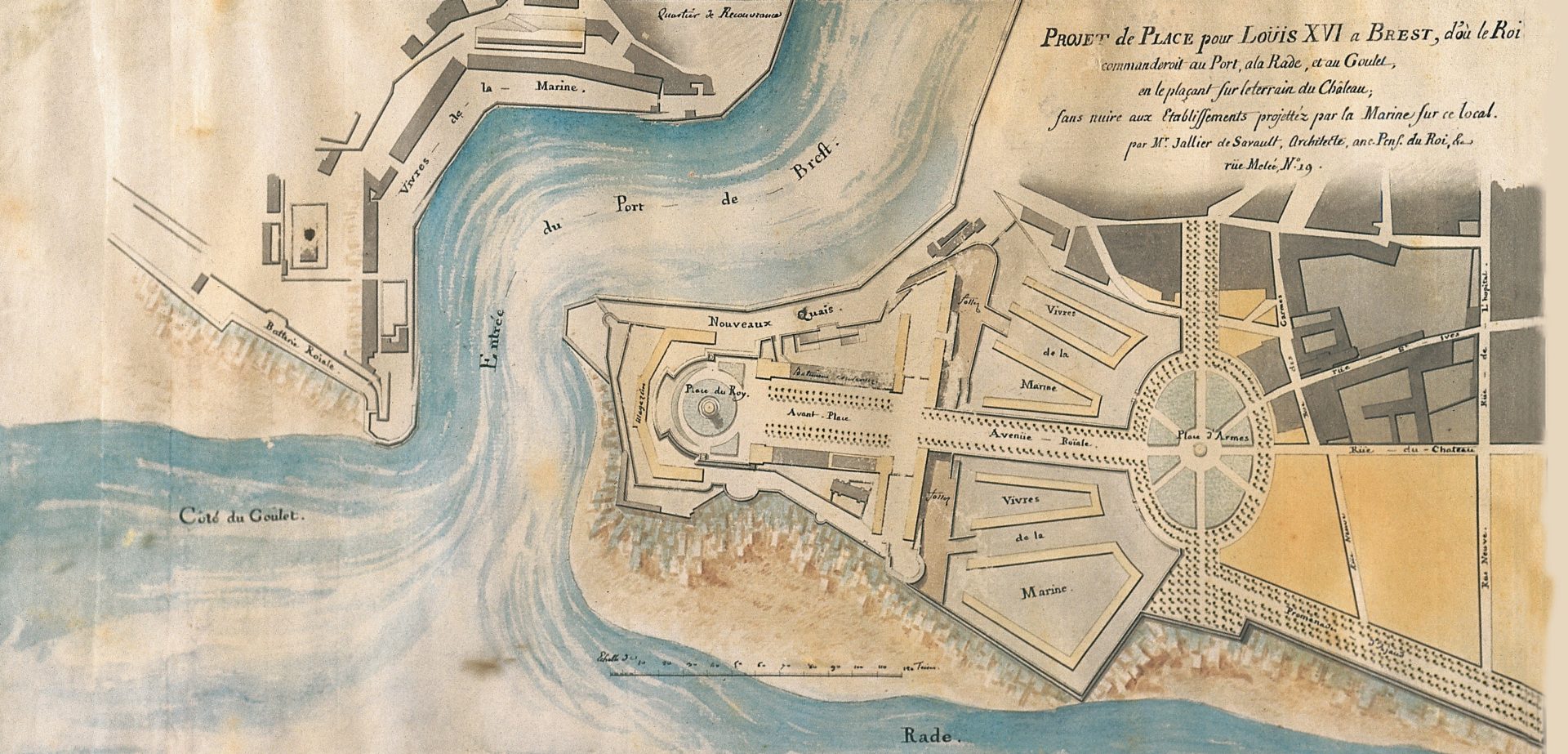Claude Jean-Baptiste Jallier de Savault, Unrealized project for the Place Louis XVI, plan, ca. 1785, Musée des Beaux-Arts de Brest.
This drawing presents an urban embellishment project imagined by the architect Claude Jean-Baptiste Jallier de Savault (1739-1806) at the end of the Enlightenment period. The spectacular project he proposed to carry out included installing the royal statue, donated by the ‘Etats de Bretagne’ (The Estates of Brittany) in 1784, at the tip of the castle’s peninsula.
One glance at the title of this plan is all it takes to grasp the symbolic and practical problems that its development would cause. First of all, its purpose was tohonour the king as liberator of the seas, crowned with glory at the end of the American War of Independence: the statue would therefore “hold dominion over the port, the roadstead and the Goulet”. In the spirit of the time, this type of monument was seen as a true incarnation of the monarch and it is easy to understand why placing his statue at the heart of the kingdom’s largest arsenal would indeed help to glorify his image as the heroic supreme commander of the Navy.
There were also the practical challenges of making this royal square coexist with the “establishments planned by the Navy”. Warehouses, which were to be built below and in front of the castle would intermingle with this monumental project in a skillful interweaving between public and military spaces. However,,the risks incurred by this rather original form of cohabitation finally prompted the Naval administration’s decision to abandon the project, which was strongly disapproved of by the population, even before the Revolution broke out.
Yvon Plouzennec

